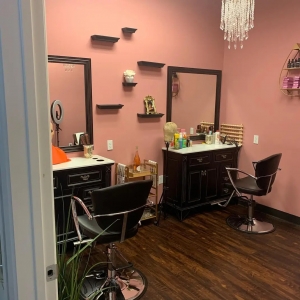We all want to feel comfortable, in our clothes, our homes, and our bodies. Yet, without realizing it, many of us carry small daily habits that slowly chip away at that sense of ease. From the way we sit at our desks to what we wear underneath our favorite outfits, comfort isn’t just about luxury, it’s about alignment, awareness, and care.
For instance, something as simple as choosing breathable bras can make a surprising difference in your daily comfort. It’s often the smallest adjustments, the ones we overlook, that create the biggest improvement in how we move, rest, and feel. Let’s explore some of these hidden comfort saboteurs and discover how to fix them for good.
Poor Posture: The Silent Energy Drainer
Many of us don’t realize how much energy poor posture steals from our day. Whether you’re hunched over a laptop, slouching on the couch, or looking down at your phone, your spine and muscles are constantly compensating. Over time, this leads to back pain, tension headaches, and fatigue, all of which drain your energy and focus.
The Fix
- Adjust your workstation. Your monitor should be at eye level, and your chair should support your lower back.
- Take movement breaks. Every 30–45 minutes, stand up, stretch, and reset your posture.
- Strengthen your core. Simple exercises like planks and bridges can improve alignment and make good posture feel effortless.
Even a few mindful moments a day can train your body to sit and stand in ways that conserve, rather than drain, your energy.
Ignoring What You Wear Against Your Skin
We often think about style before we think about comfort. But if your base layers trap heat, dig into your shoulders, or limit movement, your whole body feels the impact. Tight waistbands, synthetic fabrics, and rough textures can cause irritation, sweating, and even anxiety over time.
The Fix
Opt for breathable, moisture-wicking fabrics that move with you instead of against you. Natural fibers like cotton or bamboo allow air to circulate, keeping your skin cool and comfortable. The same goes for undergarments, pieces designed to support without suffocating, like breathable bras, can help you move freely and feel confident throughout the day.
A good rule of thumb: if you have to “tolerate” an outfit, it’s not serving you. Comfort is self-respect, not indulgence.
Overlooking Micro-Stressors In Your Environment
Cluttered desks, harsh lighting, and constant background noise might not seem like dealbreakers, but over time, they elevate stress hormones and reduce focus. These environmental “micro-stressors” can make even a calm person feel restless or drained.
The Fix
- Declutter your space. Keep only what you need and what inspires calm.
- Adjust lighting. Natural light boosts mood; soft warm light helps in the evenings.
- Minimize noise pollution. Use soft music or white noise to create balance.
A clean, well-lit, and peaceful environment supports emotional comfort, the kind that lets your mind breathe as easily as your body.
Skipping Rest In The Name Of Productivity

We live in a culture that glorifies hustle, but comfort and productivity aren’t opposites, they’re partners. When you push through fatigue, your body compensates by tightening muscles, slowing digestion, and lowering focus. That’s why even when you “power through,” you often feel less sharp and more irritable.
The Fix
Respect your body’s natural rhythms. Build rest into your schedule, not as an afterthought, but as a vital task. A 10-minute power nap, a short walk outside, or mindful breathing can all reset your nervous system.
Sleep hygiene also matters: a consistent bedtime, cool room temperature, and quality bedding can turn rest into restoration. When you sleep well, you think clearly and feel better equipped to handle whatever comes your way.
Neglecting Breath & Movement
Shallow breathing is one of the most common, and overlooked, comfort killers. When we’re stressed or distracted, our breath moves higher into the chest, limiting oxygen flow and increasing tension. Over time, this affects everything from digestion to focus.
The Fix
- Practice deep breathing. Inhale through your nose for four counts, exhale through your mouth for six.
- Incorporate light movement. Gentle yoga or stretching encourages deeper breathing and loosens tight muscles.
- Pay attention to your shoulders. If they’re constantly lifted toward your ears, that’s a cue to release and exhale.
Breathing fully is one of the simplest, most powerful ways to return to comfort, no equipment required.
Forgetting That Comfort Is Mental, Too
It’s not just the physical environment that matters. Mental comfort, peace of mind, clarity, and emotional ease, plays an equally important role. Constant comparison, digital overload, and unkind self-talk can create invisible discomfort that lingers even when you’re “relaxing.”
The Fix
- Limit social media exposure. Curate your feeds to include inspiration, not comparison.
- Create digital boundaries. Take tech-free breaks to reset your mind.
- Practice self-compassion. Speak to yourself as kindly as you would to a close friend.
A comfortable mind supports a comfortable body. True well-being happens when both work in harmony.
Small Changes, Big Impact
Comfort isn’t a luxury, it’s the foundation of a healthy, balanced life. By addressing these hidden habits, you can transform your daily routine into one that supports ease, energy, and self-care.
The key is mindfulness: noticing where tension hides, where friction builds, and where small improvements can bring lasting relief. Whether it’s through posture, breathing, environment, or wardrobe choices, comfort starts with awareness.
Because when you feel good in your body and surroundings, you don’t just move more freely, you live more fully.






